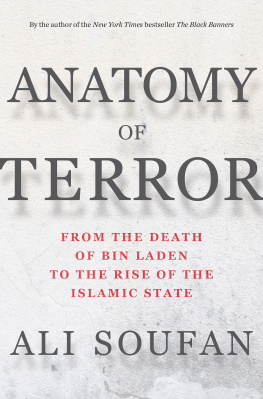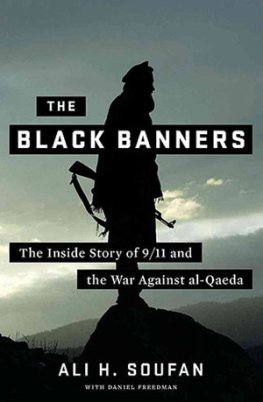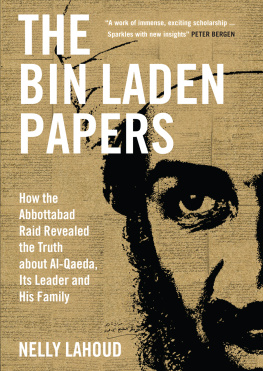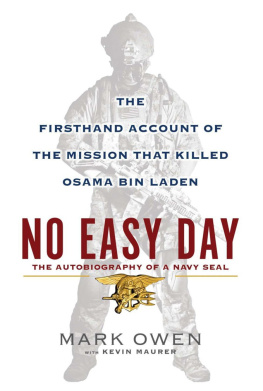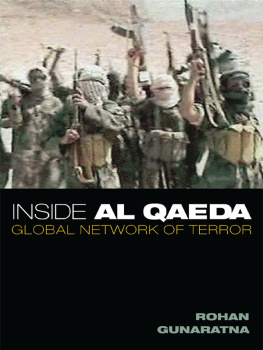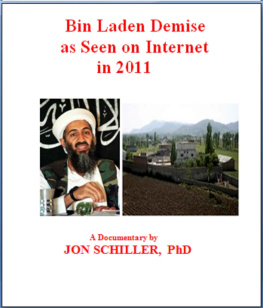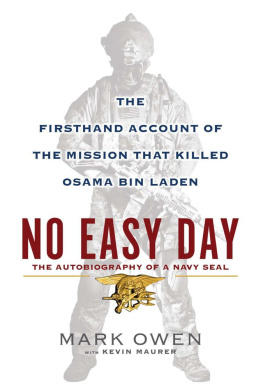Ali Soufan - Anatomy of Terror: From the Death of bin Laden to the Rise of the Islamic State
Here you can read online Ali Soufan - Anatomy of Terror: From the Death of bin Laden to the Rise of the Islamic State full text of the book (entire story) in english for free. Download pdf and epub, get meaning, cover and reviews about this ebook. year: 2017, publisher: W. W. Norton & Company, genre: Politics. Description of the work, (preface) as well as reviews are available. Best literature library LitArk.com created for fans of good reading and offers a wide selection of genres:
Romance novel
Science fiction
Adventure
Detective
Science
History
Home and family
Prose
Art
Politics
Computer
Non-fiction
Religion
Business
Children
Humor
Choose a favorite category and find really read worthwhile books. Enjoy immersion in the world of imagination, feel the emotions of the characters or learn something new for yourself, make an fascinating discovery.
- Book:Anatomy of Terror: From the Death of bin Laden to the Rise of the Islamic State
- Author:
- Publisher:W. W. Norton & Company
- Genre:
- Year:2017
- Rating:3 / 5
- Favourites:Add to favourites
- Your mark:
Anatomy of Terror: From the Death of bin Laden to the Rise of the Islamic State: summary, description and annotation
We offer to read an annotation, description, summary or preface (depends on what the author of the book "Anatomy of Terror: From the Death of bin Laden to the Rise of the Islamic State" wrote himself). If you haven't found the necessary information about the book — write in the comments, we will try to find it.
A compelling, definitive account of how and why bin Ladens ideology keeps rising from the dead.
In early 2011, the heart of the Muslim world roiled in protest, consumed with the upheaval of the Arab Spring. The governments of Tunisia and Egypt had already fallen; those of Libya and Yemen would soon follow. Watching the chaos from his hideout in Pakistan, Osama bin Laden saw a historic opportunity: the next stage, he declared, will be the reinstating of the rule of the caliphate.
Within weeks, bin Laden was dead, shot in the dark by a U.S. Navy SEAL. Commentators around the world began to prophesy al-Qaedas imminent demise. But six years later, the reality is the reverse. The groups affiliates have swollen, and the Islamic Stateal-Qaedas most brutal spinoff to dateproclaims itself the reborn caliphate bin Laden foretold in his final weeks.
In Anatomy of Terror, former FBI special agent and New York Times best-selling author Ali Soufan dissects bin Ladens brand of jihadi terrorism and its major offshoots, revealing how these organizations were formed, how they operate, their strengths, andcruciallytheir weaknesses. This riveting account examines the new Islamic radicalism through the eyes of its flag-bearers, including a Jordanian former drug dealer whose cruelties shocked even his fellow militants, an Air Force colonel who once served Saddam Hussein, and a provincial bookworm who declared himself caliph of all Muslims. We meet Ayman al-Zawahiri, titular head of al-Qaeda; Saif al-Adel, an Egyptian ex-soldier who faked his own death to become the groups security chief; and bin Ladens own beloved son Hamza, a prime candidate to lead the organization his late father founded.
To eliminate the scourge of terrorism, we must first know who the enemy actually is, and what his motivations are. Anatomy of Terror lays bare the psychology and inner workings of al-Qaeda, the Islamic State, and their spawn, and shows how the spread of terror can be stopped.
Ali Soufan: author's other books
Who wrote Anatomy of Terror: From the Death of bin Laden to the Rise of the Islamic State? Find out the surname, the name of the author of the book and a list of all author's works by series.

